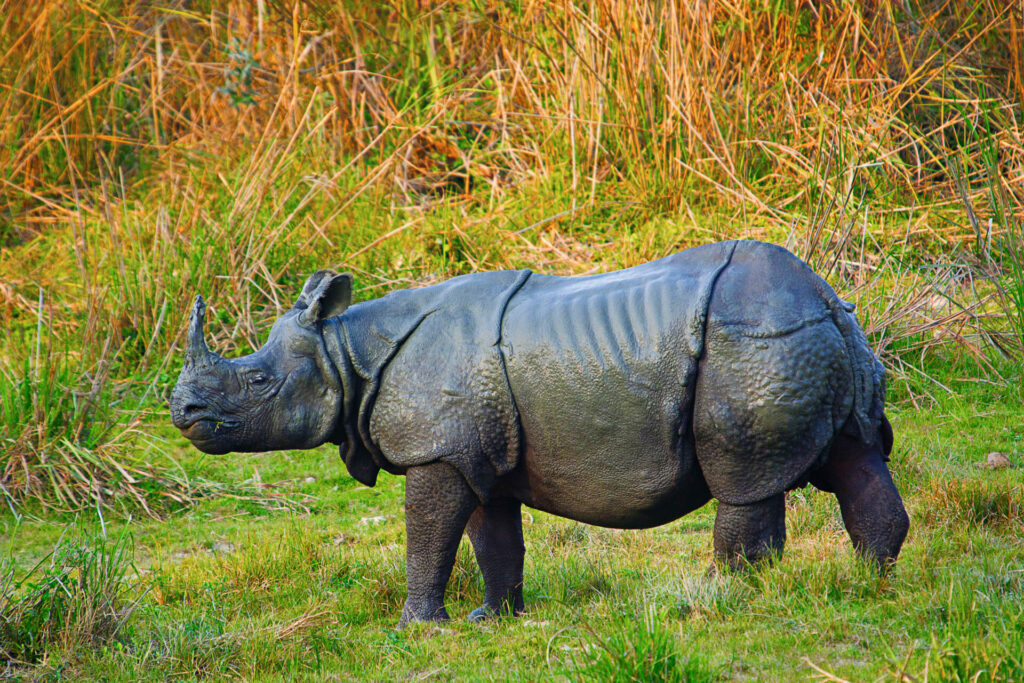In a move mirroring the dramatic de-extinction of dinosaurs in the Jurassic Park movie series, scientists say they are close to bring back to life the huge extinct dodo bird.
The flightless avian was hunted to extinction on its only home – the island of Mauritius in the Indian Ocean – 350 years ago.
But a genetic engineering company has used DNA from a museum skull to sequence the species’ genome. It is now developing genetically modified chickens to hopefully act as surrogate mothers to carry embryos.
The team, from US-based Colossal Biosciences, has partnered with the Mauritian Wildlife Foundation to find a site for its return.

Dr Beth Shapiro, Colossal board member and Professor of Ecology and Evolutionary Biology at University of California Santa Cruz (UCSC), said: ‘The dodo is a prime example of a species that became extinct because we – people – made it impossible for them to survive in their native habitat.’
There has never been more urgency to preserve species than there is today. It’s not just important for their continued existence. It’s for the greater good of the planet.
She added: ‘There has never been more urgency to preserve species than there is today. It’s not just important for their continued existence. It’s for the greater good of the planet. Together, Colossal and the scientific community at large are committed to our efforts to de-extinct those we’ve lost.’
Losing the Dodo
According to reports from maritime explorers, Dutch sailors probably first encountered the dodo on Mauritius in 1598, marking the beginning of the end for the species. It was hunted for food and also fell victim to settlers’ domestic animals such as goats and pigs, and invasive species such as rats, which all ate its eggs and deprived it of food sources.

When analysing the demise of the population Colossal’s research team said: ‘Before their population numbers began a rapid descent to zero, the dodo bird lived a simple life. But these flightless islanders were simple in neither body nor mind, contrary to popular belief. In reality, they were merely unaware of the dangers posed by predatory animals, because for the majority of their existence, dodo birds hadn’t encountered any.
‘Unfortunately, the absence of natural predators meant that the dodo was an easy target for the invasive species that accompanied equally-invasive human settlers. Accounts tell of the birds approaching humans without fear because they had never been hunted or preyed upon’
Dr Beth Shapiro, Colossal board member and Professor of Ecology and Evolutionary Biology at University of California Santa Cruz
‘Unfortunately, the absence of natural predators meant that the dodo’s resulting temperament, traits and behaviour made it an easy target for the invasive species that accompanied equally-invasive human settlers. Accounts tell of the birds approaching humans without fear, again, because they had never been hunted or preyed upon.’
Dodo DNA
Shapiro, along with collaborators Tom Gilbert and John Fjeldså from the University of Copenhagen, led a team to sequence and assemble the dodo’s genome using DNA extracted from a skull in the collection of the Natural History Museum of Denmark.

The dodo genome is currently being analysed by a team from the UCSC Paleogenomics Lab along with a genome from the dodo’s close – and also extinct – relative, the Rodrigues solitaire, using a sample collected by paleontologist Julian Hume.
There are varying accounts of the last official sighting of the bird, but in 2003, analytical biologists David Roberts and Andrew Solow used a formula to place its final date of extinction sometime around 1690.
The Colossal team added: ‘With its muted grey feathers and stark white tail plume, the dodo was, in many ways, a minimalist. Nature, having seemingly forgotten to provide the bird an enemy, removed its necessity to fly or seek shelter in the branches of Mauritius’ lofty trees.
‘Still, their evolution was biologically complex, its success evidenced by the species’ carefree lifestyle, prior to the arrival of settlers at Mauritius. While circumstance eventually left the dodo vulnerable to extinction, evolution is not to blame for the shortsightedness of man.
‘A mysterious bird of similarly mysterious origins, the dodo bird ruled the roost on its native island of Mauritius—and nowhere else-until meeting an untimely demise. Because in the late 17th century. man brought an abrupt end to the dodo species. Today, Colossal is committed to bringing it back.’














